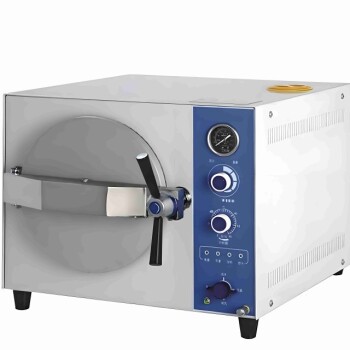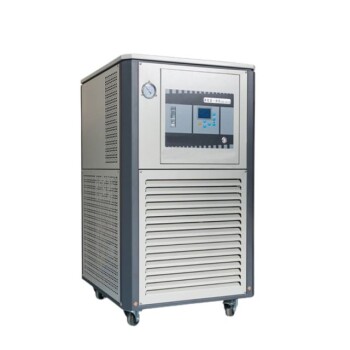
vacuum pump & cold trap chiller
Laboratory Vertical Water Circulating Vacuum Pump for Lab Use
Item Number : KV-1
Price varies based on specs and customizations
- Vacuum port
- 5
- Single port flowrate
- 10 L/Min
- Vacuum pressure
- 0.098 Mpa
- Pump Flowrate
- 80 L/Min
- Pump heading
- 12 M
Shipping:
Contact us to get shipping details Enjoy On-time Dispatch Guarantee.
Why Choose Us
Reliable PartnerEasy ordering process, quality products, and dedicated support for your business success.
Applications
Water Circulating Vacuum Pump takes circulating water as working fluid to create negative pressure by fluid jet.
It can provide negative pressure condition for the processes of evaporation, distillation, crystallization, drying, sublimation, pressure-reducing filtration and so on, particularly be suitable for labs and small scale test of industries such as universities and colleges, scientific research institutes, chemical industry, pharmacy, biochemistry, foodstuff, pesticide, agricultural engineering, biological engineering.
Detail & Parts



| Detailed material | ||||||
| Ejector | check valve | Connecting pipe | three links | pump body | impeller | Air extraction nozzle |
| Copper | PP | NR | PP | 304 stainless steel | 304 stainless steel | PP |
Advantages
- Widely applied to research experiments, small scale tests and small scale production with the process of evaporation, distillation, crystallization, drying, sublimation, pressure-reducing filtration.
- Working principle is the same as that of desk-top vacuum pump.
- Compared with desk-top vacuum pump, larger air sucking amount can meet negative pressure requirements of large air sucking amount.
- Five taps can be used alone or in parallel. A five-way adapter can connect five taps to increase air sucking amount, which can meet the experiment requirements of large scale rotary evaporator or reactor.
- Motor is supplied by famous manufacturer with fluorine rubber sealing which can avoid the invasion of corrosive gas.
- Water tank adopts polyvinyl chloride ( PVC ) material. Housing adopts carbon steel and the surface adopts electrostatic spraying.
- Copper ejector; Tee junction, check valve and suction nozzle are PP material.
- Pump body and impeller adopt stainless steel 304.
- Equipped with casters for convenient moving.
- Replace water regularly to keep water clean to ensure perfect vacuum condition.
- Shorten the water replacing period when it is used to pump corrosive gas.
Technical specifications
| Model | SHZ-C |
| Vacuum port | 5 |
| Single port flowrate | 10L/Min |
| Vacuum pressure | 0.098Mpa |
| Pump Flowrate | 80L/Min |
| Pump heading | 12M |
| Pump head material | SS304/PTFE |
| Reservor volume | 50L |
| Motor power | 370W |
| Dimensions | 440*340*830mm |
| Weight | 37Kg |
Warnings
Operator safety is the top important issue! Please operate the equipment with cautions. Working with inflammable& explosive or toxic gases is very dangerous, operators must take all necessary precautions before starting the equipment. Working with positive pressure inside the reactors or chambers is dangerous, operator must fellow the safety procedures strictly. Extra caution must also be taken when operating with air-reactive materials, especially under vacuum. A leak can draw air into the apparatus and cause a violent reaction to occur.
Designed for You
KinTek provide deep custom made service and equipment to worldwide customers, our specialized teamwork and rich experienced engineers are capable to undertake the custom tailoring hardware and software equipment requirements, and help our customer to build up the exclusive and personalized equipment and solution!
Would you please drop your ideas to us, our engineers are ready for you now!
4.9
out of
5
Reliable vacuum pump for flammable gases, ensures safety during experiments.
4.7
out of
5
Degassing effect is remarkable, noticeably reduces air bubbles in the mud.
4.8
out of
5
Offset main motor and lowered center of gravity enhance stability and reduce vibration.
4.6
out of
5
Belt drive simplifies maintenance and avoids reduction mechanism complexity.
4.9
out of
5
Steam-water separator prevents water and gas discharge simultaneously, maintaining exhaust pipe畅通.
4.7
out of
5
Acts as a high-power agitator when no air immersion, versatile and efficient.
4.8
out of
5
Installation requirements are forgiving, suitable for various laboratory environments.
4.9
out of
5
Speed-controlled adaptive vacuum control delivers precise vacuum adjustment.
4.7
out of
5
Evaporation rate optimization prevents over-boiling and foaming, improving process efficiency.
4.8
out of
5
Liquid ring vacuum pumps are tolerant to liquids, solids, and vapors, ensuring safe operation.
4.9
out of
5
Diaphragm pumps' dry method operation minimizes contamination risks.
4.7
out of
5
Vacuum pumps contribute to efficient fluid transportation and gentle processes in printing industry.
4.8
out of
5
Circulating water multi-purpose vacuum pump offers versatile applications in various industries.
4.9
out of
5
Five taps allow simultaneous extraction from multiple devices, increasing experimental efficiency.
REQUEST A QUOTE
Our professional team will reply to you within one business day. Please feel free to contact us!
Related Products

Laboratory Benchtop Water Circulating Vacuum Pump for Lab Use
Need a water circulating vacuum pump for your lab or small-scale industry? Our Benchtop Water Circulating Vacuum Pump is perfect for evaporation, distillation, crystallization, and more.

Laboratory Rotary Vane Vacuum Pump for Lab Use
Experience high vacuum pumping speed and stability with our UL-certified Rotary Vane Vacuum Pump. Two-shift gas ballast valve and dual oil protection. Easy maintenance and repair.

Electric Heated Hydraulic Vacuum Heat Press for Lab
The Electric Vacuum Heat Press is a specialized heat press equipment that operates in a vacuum environment, utilizing advanced infrared heating and precise temperature control for high quality, rugged and reliable performance.

Efficient split chamber CVD furnace with vacuum station for intuitive sample checking and quick cooling. Up to 1200℃ max temperature with accurate MFC mass flowmeter control.

Efficient and reliable, KinTek KHB Heating Circulator is perfect for your lab needs. With a max. heating temperature of up to 300℃, it features accurate temperature control and fast heating.

Maximize lab efficiency with the KinTek KCP 5L Chilling Circulator. Versatile and reliable, it provides constant chilling power up to -120℃.

High Pressure Laboratory Vacuum Tube Furnace Quartz Tubular Furnace
KT-PTF High Pressure Tube Furnace: Compact split tube furnace with strong positive pressure resistance. Working temp up to 1100°C and pressure up to 15Mpa. Also works under controller atmosphere or high vacuum.

Laboratory Sterilizer Lab Autoclave Pulse Vacuum Lifting Sterilizer
The pulse vacuum lifting sterilizer is a state-of-the-art equipment for efficient and precise sterilization. It uses pulsating vacuum technology, customizable cycles, and a user-friendly design for easy operation and safety.

Laboratory Sterilizer Lab Autoclave Pulsating Vacuum Desktop Steam Sterilizer
The pulsating vacuum desktop steam sterilizer is a compact and reliable device used for rapid sterilization of medical, pharmaceutical, and research items.

KF/ISO/CF Ultra-High Vacuum Stainless Steel Flange Pipe/Straight Pipe/Tee/Cross
Discover KF/ISO/CF ultra-high vacuum stainless steel flange pipe systems, engineered for advanced applications. Ideal for laboratory, industrial, semiconductor, aerospace, and research needs.

CF KF Flange Vacuum Electrode Feedthrough Lead Sealing Assembly for Vacuum Systems
Discover high-vacuum CF/KF flange electrode feedthroughs, ideal for vacuum systems. Superior sealing, excellent conductivity, and customizable options.

Large Vertical Graphite Vacuum Graphitization Furnace
A large vertical high-temperature graphitization furnace is a type of industrial furnace used for the graphitization of carbon materials, such as carbon fiber and carbon black. It is a high-temperature furnace that can reach temperatures of up to 3100°C.

Graphite Vacuum Furnace IGBT Experimental Graphitization Furnace
IGBT experimental graphitization furnace, a tailored solution for universities and research institutions, with high heating efficiency, user-friendliness, and precise temperature control.

1700℃ Controlled Atmosphere Furnace Nitrogen Inert Atmosphere Furnace
KT-17A Controlled atmosphere furnace: 1700℃ heating, vacuum sealing technology, PID temperature control, and versatile TFT smart touch screen controller for laboratory and industrial use.

Laboratory Vacuum Tilt Rotary Tube Furnace Rotating Tube Furnace
Discover the versatility of Laboratory Rotary Furnace: Ideal for calcination, drying, sintering, and high-temperature reactions. Adjustable rotating and tilting functions for optimal heating. Suitable for vacuum and controlled atmosphere environments. Learn more now!

Get all-in-one heating, chilling, and circulating capabilities with our KinTek KCBH 80L Heating Chilling Circulator. High efficiency, reliable performance for labs and industrial applications.
Related Articles

Water Circulating Vacuum Pumps: A Practical Guide for Laboratory Applications
Discover the benefits of water circulating vacuum pumps for labs: chemical safety, low maintenance, and explosion-proof operation. Ideal for sensitive applications.

How to Choose Laboratory Vacuum Pumps for Maximum Efficiency and Cost Savings
Learn how to choose the right lab vacuum pump for efficiency & cost savings. Compare oil-sealed vs. oil-free pumps & future-proof your investment.

Discover The Benefits of Using A Rotary Evaporator
Rotary evaporators are essential laboratory equipment used in the process of separating solvents from samples. These devices work by evaporating the solvent from the sample under a reduced pressure and controlled temperature.

Choosing the Right Rotary Vacuum Evaporator for Your Lab
Rotary vacuum evaporators are essential tools for any laboratory that needs to concentrate or isolate solutions. These devices work by heating a sample under vacuum to increase its surface area and effectively remove solvent.

Understanding the Basics of Isostatic Pressing
Isostatic pressing is a manufacturing process used to shape and consolidate materials by applying equal pressure from all directions. The technique involves placing a material in a pressure vessel and applying hydrostatic pressure to the material.

Cold Isostatic Pressing: Techniques and Applications
Cold Isostatic Pressing (CIP) is a powerful technique used in materials processing to enhance material properties. It involves subjecting a material to uniform pressure from all sides by immersing it in a high-pressure fluid medium and applying hydraulic pressure.

Why Tap Water Chilling Is Not Enough for Your Rotavap
Proper chilling is crucial for many laboratory applications, including rotavap. Without proper cooling, the solvent vapor produced during the rotavap process may condense in the wrong place and affect the quality of the final product.

The Importance of Water Distillation in the Laboratory: Ensuring Purity and Quality for Accurate Results
Water distillation is an important process in the laboratory, as it ensures the purity and quality of the water being used in experiments and testing procedures.

Advantages of Laboratory Circulating Water Vacuum Pumps
Explores the benefits of using laboratory circulating water vacuum pumps over traditional methods.

Installation of Tube Furnace Fitting Tee
Mainly introduces the installation method of tube furnace fitting tee.

The Most Frequently Used Equipment in the Synthesis Lab: The Circulating Water Vacuum Pump
Discover the often overlooked but crucial role of the circulating water vacuum pump in synthesis labs.

How to Maximize Extraction Efficiency with a Rotary Evaporator
Rotary evaporation is a technique used to separate solvents from a sample through the removal of volatile components. It involves placing a sample in a round bottom flask and rotating it while under vacuum.
